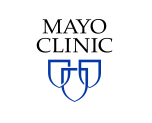Gabapentin for Headache in Aneurysmal Subarachnoid Hemorrhage
| Status: | Completed |
|---|---|
| Conditions: | Migraine Headaches, Neurology |
| Therapuetic Areas: | Neurology |
| Healthy: | No |
| Age Range: | 18 - Any |
| Updated: | 10/20/2017 |
| Start Date: | December 2014 |
| End Date: | September 1, 2017 |
The purpose of this study is to see how much gabapentin will reduce headaches associated with
subarachnoid hemorrhage (SAH) and to reduce the amount of narcotic pain medication
prescribed.
subarachnoid hemorrhage (SAH) and to reduce the amount of narcotic pain medication
prescribed.
We plan to use gabapentin (GBP), an FDA approved non-narcotic pain medication for neuropathic
pain, which is also an alpha-2-delta (A2DR) receptor analogue to reduce the pain and decrease
the need for narcotics in patients with aneurysmal subarachnoid hemorrhage (aSAH). GBP has
been shown to decrease neuropathic and non-neuropathic pain in a variety of perioperative and
postoperative conditions. A2DR affinity also has some neuroprotective effect in animal data.
We plan to conduct a prospective, double-blinded, randomized trial to further assess
GBP-associated reductions in narcotic use and pain scores compared to the non-GBP (placebo)
arm. To accomplish this aim, we plan to randomize 20 aSAH patients with headache to either
GBP and standard of care pain treatment versus placebo and standard of care treatment.
pain, which is also an alpha-2-delta (A2DR) receptor analogue to reduce the pain and decrease
the need for narcotics in patients with aneurysmal subarachnoid hemorrhage (aSAH). GBP has
been shown to decrease neuropathic and non-neuropathic pain in a variety of perioperative and
postoperative conditions. A2DR affinity also has some neuroprotective effect in animal data.
We plan to conduct a prospective, double-blinded, randomized trial to further assess
GBP-associated reductions in narcotic use and pain scores compared to the non-GBP (placebo)
arm. To accomplish this aim, we plan to randomize 20 aSAH patients with headache to either
GBP and standard of care pain treatment versus placebo and standard of care treatment.
Inclusion Criteria:
1. 18 years of age or older
2. Have aneurysmal subarachnoid hemorrhage (aSAH) diagnosed by CT scan of the brain
and/or angiogram evidence of intracranial aneurysm (CTA or digital subtraction
angiogram or MRA)
3. Have symptomatic headache
4. Able to swallow and verbalize pain score
5. No known allergy to gabapentin or fentanyl
6. Numeric pain score ≥ 5
7. Ability to provide written personal consent
Exclusion Criteria:
1. Gabapentin use prior to SAH admission
2. Renal failure with creatinine clearance less than 30 mL/min
3. Unable to receive standard of care pain medications
4. Pregnant or breastfeeding patients
5. History of severe depression defined by DSM IV
We found this trial at
1
site
Mayo Clinic Florida Thousands of people come to Mayo Clinic in Jacksonville, Fla., annually for...
Click here to add this to my saved trials
